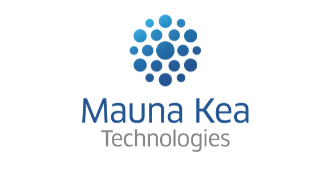Cellvizio® technology combined with AI outperforms human experts in pancreatic cyst risk stratification, a major breakthrough for patient management
Results build on new CLIMB study data recently presented at Digestive Disease Week® (DDW)1 confirming Cellvizio®’s unmatched accuracy in pancreatic cyst diagnosis
Paris and Boston, June 2, 2025 – 5:45 p.m. CEST – Mauna Kea Technologies (Euronext Growth: ALMKT), inventor of Cellvizio®, the multidisciplinary probe and needle-based confocal laser endomicroscopy (p/nCLE) platform, today announces a significant advancement with the results of a landmark study published in the peer-reviewed journal Pancreatology. The research, titled “Towards Automating Risk Stratification of Intraductal Papillary Mucinous Neoplasms: Artificial Intelligence Advances Beyond Human Expertise with Confocal Laser Endomicroscopy2”, demonstrates that Artificial Intelligence (AI) model combined with Cellvizio® needle-based confocal laser endomicroscopy (nCLE) technology significantly outperforms human experts in risk stratification of Intraductal Papillary Mucinous Neoplasms (IPMNs), a common type of pancreatic cyst.
The study aimed to compare the performance of 16 nCLE human experts with a novel AI algorithm (nCLE-AI) specifically designed for the sub-classification of a type of pancreatic cystic lesion with malignant potential. These findings build on the CLIMB study data presented this year at DDW, which demonstrated strong diagnostic performance of needle-based confocal laser endomicroscopy in differentiating benign from malignant or pre-malignant pancreatic cysts. Indeed, the latest results from the CLIMB study -spanning 17 endosonographers across 14 centers – have further reinforced the significantly superior diagnostic accuracy of Endoscopic Ultrasound-guided nCLE (EUS-nCLE) compared to the current standard of care3.
“This study marks a pivotal moment in our ability to accurately risk stratify pancreatic cysts. The nCLE-AI model has shown remarkable potential to not only enhance diagnostic accuracy beyond current expert capabilities but also to standardize the interpretation of nCLE imaging,” said Dr. Somashekar (Som) Krishna, Professor of Medicine and Director of Advanced Endoscopy at The Ohio State University Wexner Medical Center, lead author of the publication. “By providing a more precise and objective assessment, this technology can significantly aid clinical decision-making, helping to ensure that patients at high risk receive timely intervention while those with low-risk cysts may avoid unnecessary surveillance or surgery.”
The results of the study on risk stratification associated with IPMNs cysts with malignant potential, detailed in the table below, show that the nCLE-AI model combined with revised Fukuoka Criteria achieves an Area Under the Curve (AUC) of 0.85, with a sensitivity of 78% and a specificity of 78%. This performance is significantly superior to that of human experts using the same criteria (AUC 0.64; p<0.01) and represents an improvement over the nCLE-AI model alone (p=0.02), clearly demonstrating the superiority of the AI-augmented approach for enhancing the detection of malignant cysts that need immediate intervention. The AI model continues to improve rapidly with additional nCLE sequences and data.
Sacha Loiseau, Ph.D., Chairman and Chief Executive Officer of Mauna Kea Technologies, stated: “These latest results, published by a group of highly skilled interventional endoscopists from multiple countries and institutions, under the exceptional leadership of Dr. Krishna, materialize our vision of nCLE enhanced by AI models, whether developed internally or by academic partners. Adding AI will certainly lead to a broader adoption of nCLE in the community of interventional endoscopists but will also open the door to risk stratification strategies, which are completely absent in today’s standard of care. This strongly reinforces our conviction that nCLE is playing a pivotal role in the diagnosis and management of patients at risk of pancreatic cancer.”
1 Press release as of May 6, 2025
2 https://doi.org/10.1016/j.pan.2025.05.011
3 https://doi.org/10.1016/j.gie.2025.03.851

